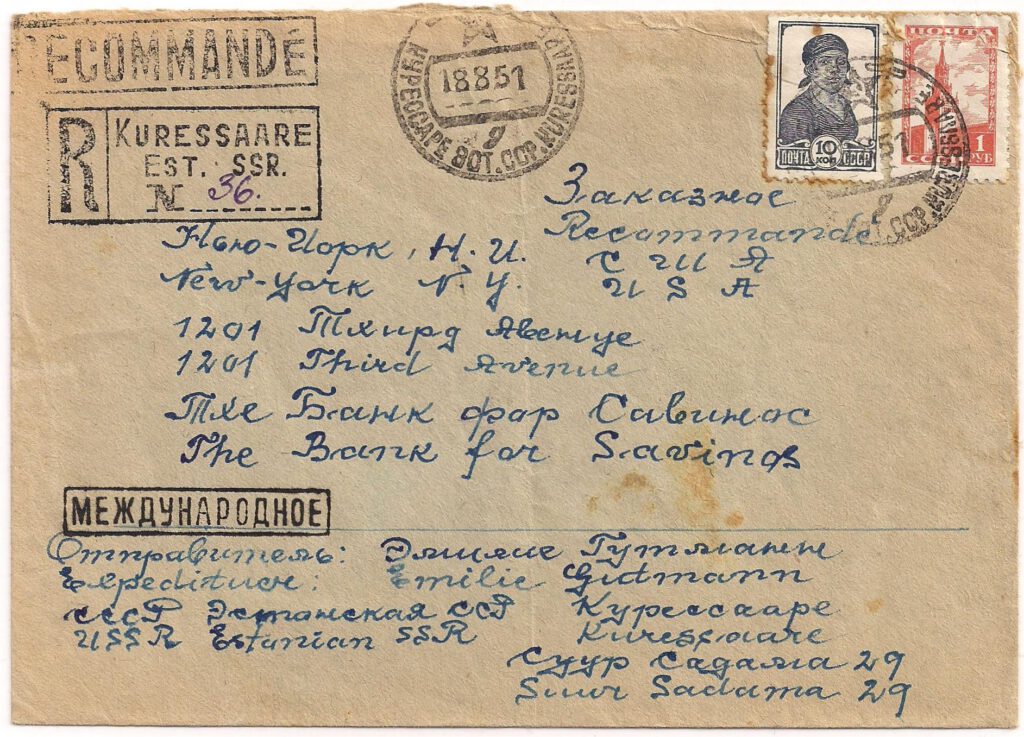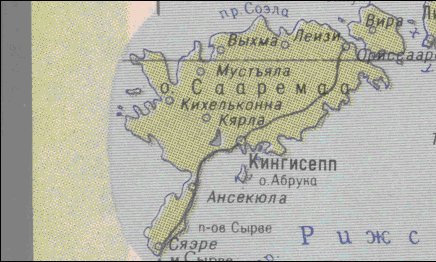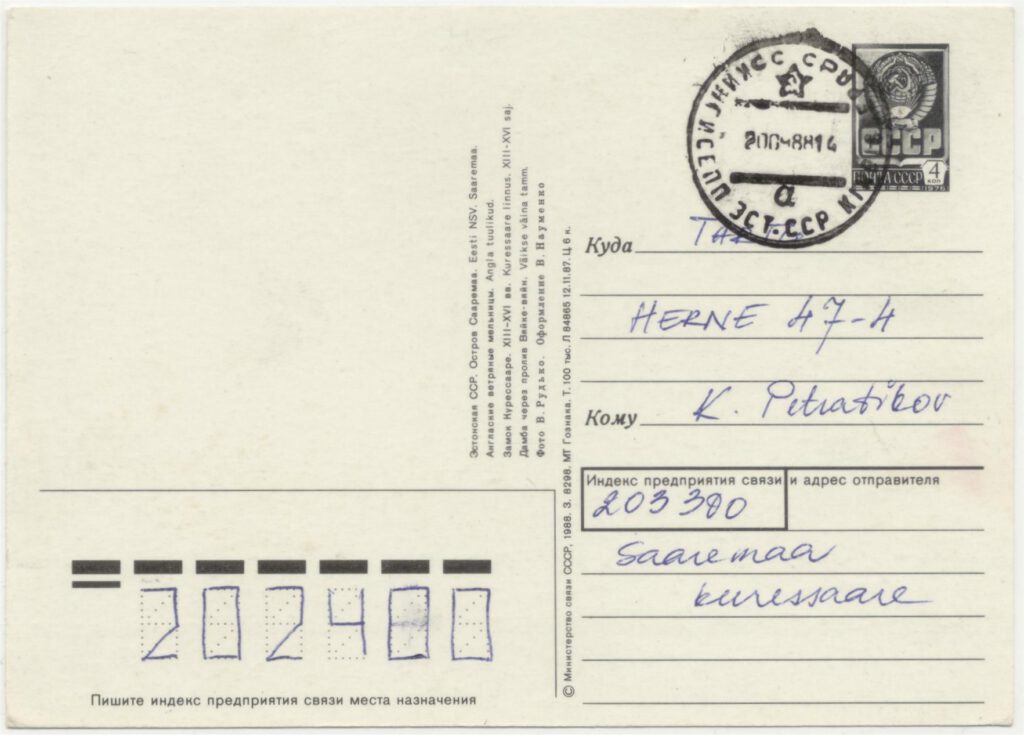In World War II the indication Arensburg is used -again- for Kuressaare, the main place on the island Saarema. After the German occupation follows -again- the Soviet occupation. The name Kuressaare then is again used.

The postmark -as on this cover – is bilingual: Russian and Estonian.
This type postmark:
At the bottom is placed the abbreviation ЭСТ ССР (EHST. SSR). The 5-ray Soviet-star is black (negativ): the hammer and sickle within the star are white. The date is placed in a box with left and right sides rounded. Lines, CCCP are fat Left Russian indication and right the Estonian One ray of the star is between CC and CP: in the later type the whole star is more direct under CCCP. Diameter 30 mm and letters 3,0 mm, star 7,00 mm
These type postmarks is in 1940-1941 and again made 1944/1945 and used till 1990.
According a classification in the magazine Lituania: type SO 2
Other types in this classification:
SO 1: diameter 25 mm, letters 3,0 mm, star 7,00 mm
SO 3: diameter 30 mm, letters 2,5 mm, star 7,00 mm, the date is placed in a box with left and right sides rounded.
SO 4: diameter 30 mm, letters 3,0 mm, no indication of the ЭСТ ССР, the date is placed in a box with left and right sides rounded.
SO 5: diameter 29 mm, letters 2,00 mm, star 5,00 mm and more direct under CCCP, the date is placed in a box with left and right sides rounded. With the date is also now the time (hour) indicated.
SO 6: diameter 29 mm, letters 2,00 mm, star 5,00 mm, the date is placed between two parallel lines.
The cover is sent registered to New York in 1951. The cover here is also registered. The letter ‘R’ (recommandée = registered) is used here in the postmark: for letters sent abroad, as in tsarist times.
For registered letters inland are postmarks with ЗАКАЗНОЕ [ZAKAZNOE] = registered. On the cover you can recognize this indication: written on the first line.
This postmark with the indication ‘МЕЖДУНАРОДНОЕ (MEZADUNARODNOE) means ‘International ‘(mail). David Skipton has written an article about this and means that is was used as control-mark for mail to foreigh countries. In his theory is proposed that the damages and nicks of the postmark was used to identify the censor. P.J. Campbell goes further on this way. Olav Petri gives some indications (in HBG, article in Dutch) to support the theory: the handstamp is also used for mail coming into the Sovjet Union and it is not used after 1998. The last is an indication that the handstamp had not a postal meaning and from this time not was needed for controlling the mail
Literature about ‘МЕЖДУНАРОДНОЕ:
The “MEZhDUNARODNOE” Markings / by David M. Skipton. – In: Rossica 1995 ; no. 125. – p. 6-18
‘МЕЖДУНАРОДНОЕ Revisited / by P.J. Campbell. – In: Rossica 1997 ; no. 128-129. – p/ 134-154
Een onschuldig lijkend stempel met een vreemde geschiedenis, alias een filatelistische hulpkreet / Olav Petri. – In: Het Baltische Gebied 2007 ; 50. – p. 22-23

Between 1952 and 1988 Kuressaare had another name: КИННИСЕПП (KINGISEPP) or Kingissepa in honour of the revolutionary Victor Kingisepp.
Map from a Soviet-atlas

In the postmark on this card, we read КИНГИСЕПП (KINGISEPP) and the Estonian indication Kingissepa.
There are two types of the postmark reported in an article of Max Kromm and Harald Vogt:
KINGISSEPP and serial letter ‘ b’ : 1-10-1974 to 20-6-1989
KINGISSEPA and serial letter ‘ a’ is used from 19-2-1985 to 20-6-1989 (as on the card here)
The type postmark:
Main distinguishing mark: date between two parallel lines. An new type, first used middle of the sixties together with another type. The greatest difference: a one circle-postmark without datum-box, but the date between two parallel lines. Soviet indication is placed left, Estonian indication on the right side. The serial-letter is placed under the date as small letter of the Russian alphabet. This type postmark is used till 1990.
29 mm in diameter, the letters 2,0 mm, star 5,00 mm
According a classification in the magazine Lituania: Type SO 6.